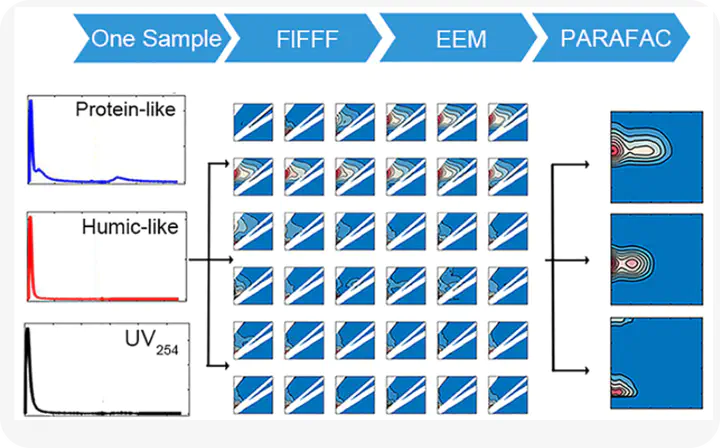Variations in Colloidal DOM Composition with Molecular Weight within Individual Water Samples as Characterized by Flow Field-Flow Fractionation and EEM-PARAFAC Analysis

Abstract
Fluorescence excitation emission matrices (EEM) and parallel factor (PARAFAC) analysis have been widely used in the characterization of dissolved organic matter (DOM) in the aquatic continuum. However, large sample sets are typically needed for establishing a meaningful EEM-PARAFAC model. Applications of the EEM-PARAFAC technique to individual samples require new approaches. Here, flow field-flow fractionation (FlFFF) combined with offline EEM measurements and PARAFAC analysis was used to elucidate the dynamic changes in DOM composition/optical properties with molecular weight within individual samples. FlFFF-derived size spectra of ultrafiltration-isolated colloidal DOM show that peak-C related fluorophores (Ex/Em= 350/450 nm) are present mostly in the 1−3 kDa size range, while peak-T associated fluorophores (Ex/Em = 275/340 nm) have a bimodal distribution with peaks in both the 1−3 kDa and the >100 kDa size fractions. The integrated EEM spectra from FlFFF size-fractionated subsamples closely resembled the bulk EEM spectra, attesting to the convincing comparability between bulk and FlFFF size-fractionated EEMs. The PARAFAC-derived DOM components are distinctive among individual samples with the predominant components being humic-like in river water, but protein-like in a highly eutrophic lagoon sample. This compelling new approach combining FlFFF and EEM-PARAFAC can be used to decipher the dynamic changes in size spectra and composition of individual DOM samples from sources to sinks or across the redox/hydrological/trophic interfaces.